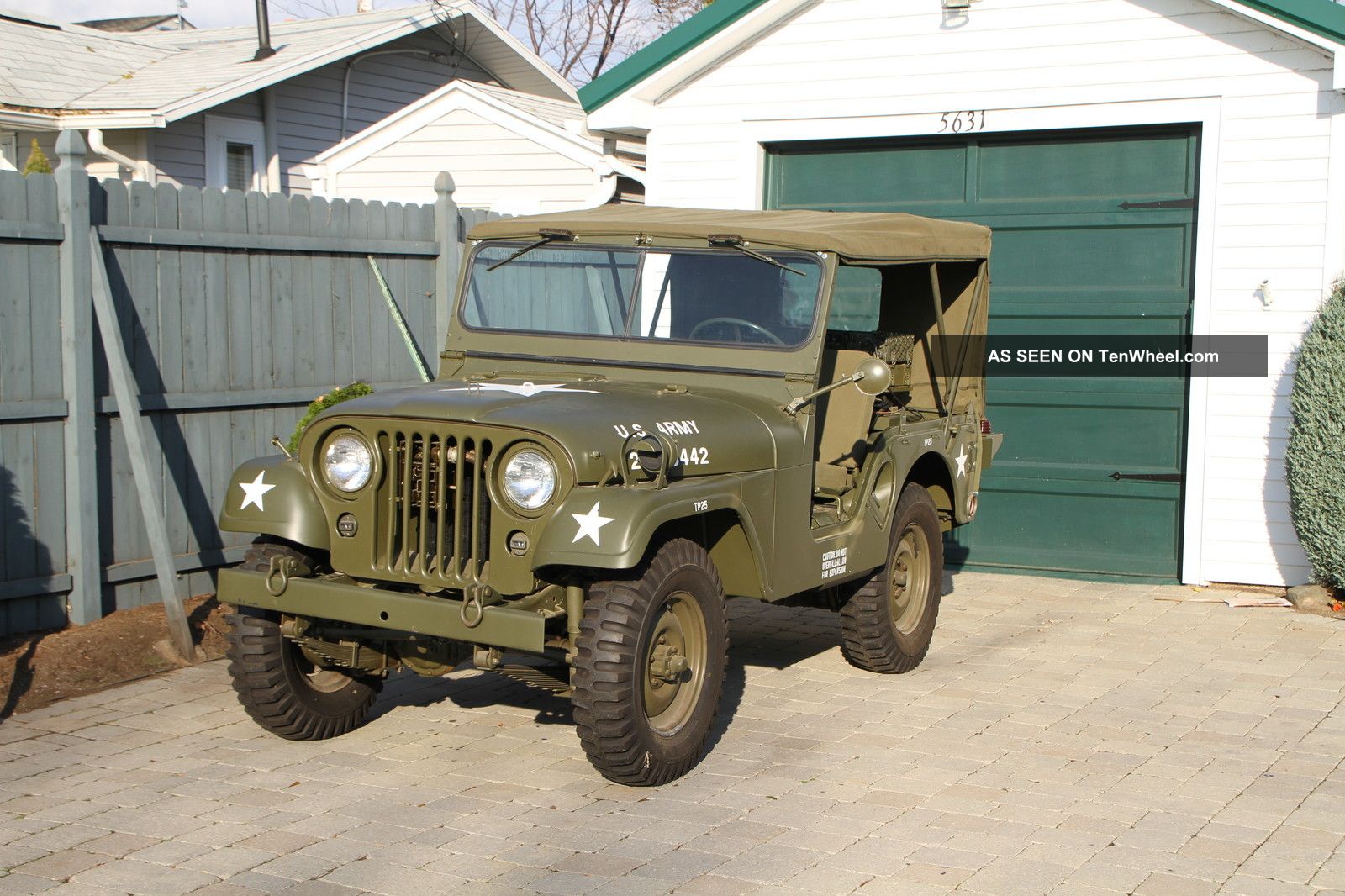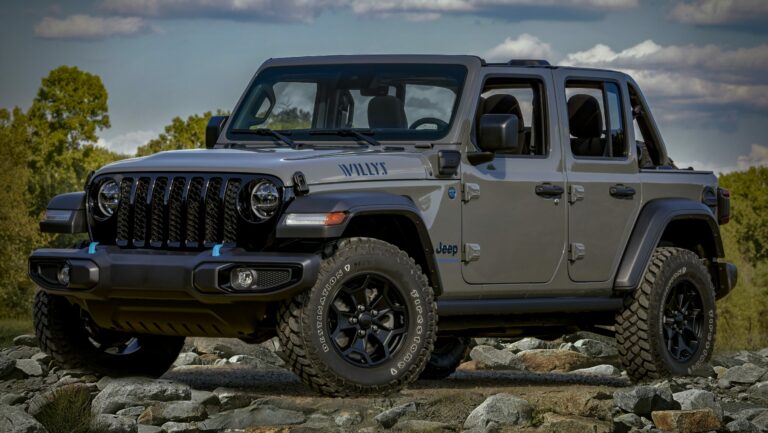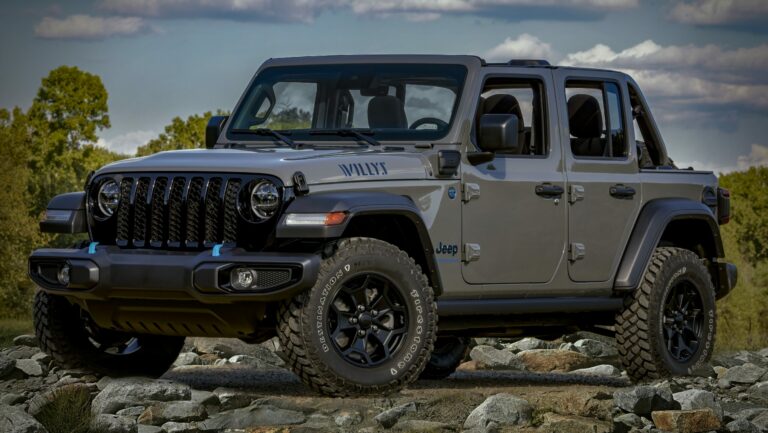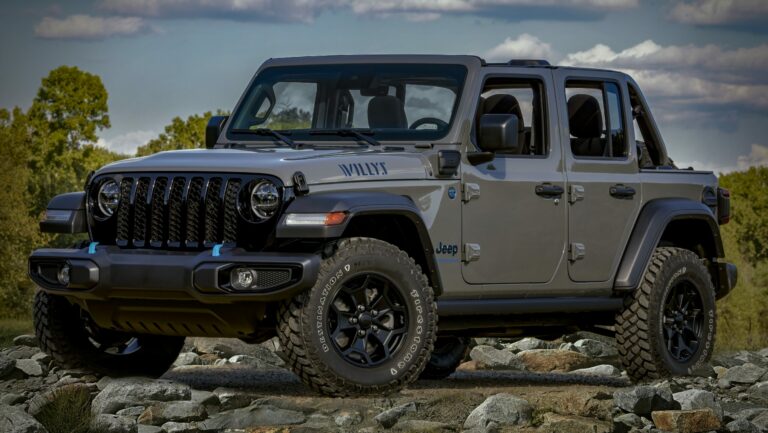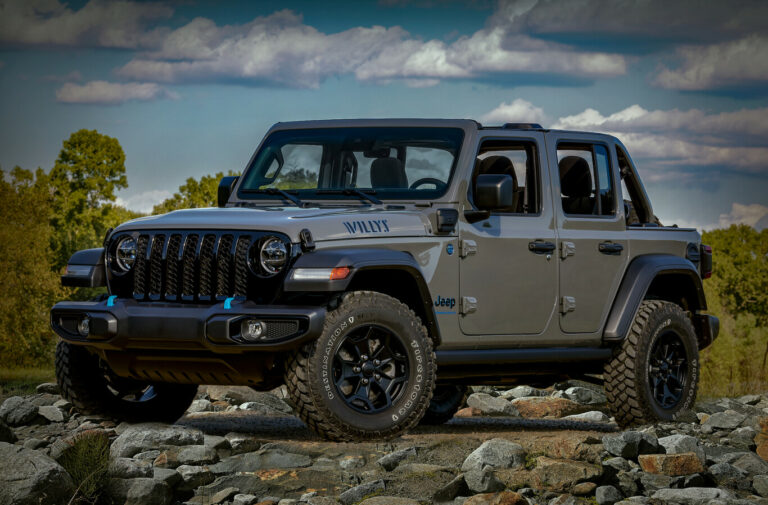Old Military Willys Jeep For Sale: A Comprehensive Buyer’s Guide
Old Military Willys Jeep For Sale: A Comprehensive Buyer’s Guide jeeps.truckstrend.com
The unmistakable silhouette, the rugged stance, the whisper of wartime heroism – the Old Military Willys Jeep is more than just a vehicle; it’s a rolling piece of history. For enthusiasts, collectors, and off-road adventurers, the prospect of an "Old Military Willys Jeep For Sale" isn’t just an item on a classifieds list; it’s an invitation to own a legend. Born from the crucible of World War II, these iconic machines, whether the original MBs and GPWs or their immediate civilian and military successors, represent a pinnacle of utilitarian design and enduring reliability.
This comprehensive guide is designed for anyone contemplating the purchase of one of these timeless vehicles. We’ll delve into their enduring appeal, explore the various models you might encounter, provide a practical roadmap for sourcing and inspecting your potential purchase, discuss valuation, and offer essential advice for ownership. Prepare to embark on a journey into the world of vintage Willys Jeeps, where history meets adventure.
Old Military Willys Jeep For Sale: A Comprehensive Buyer’s Guide
The Enduring Legacy: Why Buy an Old Military Willys Jeep?
The allure of an old Willys Jeep extends far beyond its functional design. It’s a blend of historical significance, nostalgic charm, and undeniable mechanical simplicity.
- Historical Significance: Owning a Willys MB or Ford GPW (the two primary manufacturers of the original "Jeep") is akin to owning a tangible piece of World War II history. These vehicles were indispensable to the Allied war effort, serving on every front, from reconnaissance to supply transport. Later military variants like the M38 and M38A1 continued this legacy through the Korean War and beyond.
- Nostalgia and Classic Appeal: Even civilian models like the CJ-2A and CJ-3A, often dubbed "AgriJeeps" or "Farm Jeeps," carry the unmistakable flat-fendered, open-top aesthetic that evokes a sense of simpler times and rugged individualism. They are true classics, commanding attention wherever they go.
- Robustness and Simplicity: Designed for military service, these Jeeps were built to be tough, easy to maintain, and repairable in the field. Their mechanical systems are straightforward, making them accessible even to novice mechanics. The "Go Devil" and later "Hurricane" engines are renowned for their durability.
- Off-Road Capability: Despite their age, the original Willys Jeeps remain highly capable off-roaders. Their short wheelbase, narrow track, and robust four-wheel-drive systems allow them to navigate challenging terrain with surprising agility.
- Investment Potential: While not all Willys Jeeps will appreciate dramatically, well-maintained, original, or professionally restored military models, particularly the MB/GPW, can hold or increase their value over time, making them a unique classic car investment.
- Community and Enthusiasm: Owning a Willys Jeep connects you to a passionate global community. Clubs, forums, and events offer invaluable resources, camaraderie, and opportunities to share your passion.

Understanding the Models: A Brief History and Key Variants
When searching for an "Old Military Willys Jeep For Sale," you’ll encounter several distinct models, each with its own story and characteristics. While the term "military Willys" often refers to the WWII-era MB, it’s important to understand the broader lineage.
- Willys MB / Ford GPW (1941-1945): This is the quintessential "Jeep." Produced primarily by Willys-Overland (MB) and Ford (GPW), these vehicles are virtually identical and are the true workhorses of WWII. Key features include a fixed windshield, flat-fender design, and the legendary "Go Devil" L-134 engine. They are highly sought after for their historical accuracy.
- Willys CJ-2A "AgriJeep" (1945-1949): The first civilian Jeep, released immediately after WWII. While not strictly military, it retained much of the MB’s DNA, including the "Go Devil" engine and flat-fender body. Distinguishing features include a tailgate, larger headlights, and a column-shift transmission. Many were used in agriculture and rural settings.
- Willys CJ-3A "Farm Jeep" (1949-1953): An evolution of the CJ-2A, featuring a slightly stronger chassis, one-piece windshield, and minor interior refinements. Still a flat-fender, it continued the civilian utility role.
- Willys CJ-3B "High Hood" (1953-1968): A significant visual change, the CJ-3B featured a taller hood to accommodate the new F-head "Hurricane" engine, which offered more horsepower. This model retained the flat-fender body but gained a distinctive "high hood" profile.
- Willys M38 (Military CJ-3A) (1950-1952): Developed for the Korean War, the M38 was a military version of the CJ-3A. It featured a waterproof 24-volt electrical system, a deeper fording capability, and stronger axles. It’s identifiable by its larger, sealed headlight buckets and additional military equipment.
- Willys M38A1 (Military CJ-5) (1952-1971): This marked a more significant design departure, introducing rounded front fenders and a more robust body, which would become the basis for the iconic CJ-5 civilian model. It also utilized the F-head "Hurricane" engine and retained the military 24-volt system.


For buyers specifically seeking an "Old Military Willys Jeep," the MB/GPW, M38, and M38A1 are the primary targets, with the early CJ models offering a similar aesthetic for those not strictly tied to military originality.
Where to Find Your Dream Willys Jeep: Sourcing Strategies
Finding the right Old Military Willys Jeep requires a multi-pronged approach and a keen eye.
- Online Marketplaces: Websites like eBay Motors, Craigslist, and Facebook Marketplace are common starting points. Be wary of scams and always verify the seller’s legitimacy.
- Specialized Forums & Classifieds: Forums dedicated to Willys Jeeps (e.g., G503.com for military models, eWillys.com for civilian) often have active classified sections where enthusiasts sell their vehicles directly. These sources often provide more detailed information and connect you with knowledgeable sellers.
- Classic Car Dealerships & Auction Houses: High-end dealerships specializing in vintage vehicles or auction houses like Mecum and Barrett-Jackson may offer restored or highly original examples. Expect premium pricing but also potentially greater transparency and quality.
- Specialized Willys/Jeep Restorers: Many restoration shops also act as brokers or sellers. They often have a rotating inventory of Jeeps they’ve restored or are in the process of restoring. This can be a great option for a turn-key vehicle, albeit at a higher cost.
- Enthusiast Clubs & Events: Attending vintage military vehicle shows, Jeep Jamborees, or local car club meetings can lead to direct connections with sellers and provide opportunities to see vehicles in person. Word-of-mouth is powerful in this community.
- Farm Sales & Private Listings: Sometimes, these gems are found tucked away in barns or garages. Keep an eye on local classifieds, estate sales, or simply ask around in rural areas. These "barn finds" often require significant restoration but can be bought for less.
What to Look For: A Buyer’s Inspection Checklist
Purchasing an old military Willys Jeep is not like buying a modern car. A thorough inspection is crucial. Categorize the Jeep’s condition to manage expectations and budget.
-
Condition Categories:
- Project/Barn Find: Non-running, significant rust, missing parts. Lowest price, highest restoration cost.
- Running Project: Drives, but needs substantial mechanical, electrical, and cosmetic work. Mid-range price, substantial work.
- Driver Quality: Runs reliably, passes inspection, but has cosmetic flaws, some wear and tear. Can be enjoyed immediately, minor ongoing work.
- Restored/Show Quality: Professionally restored to original or near-original specifications, immaculate condition. Highest price, minimal immediate work.
-
Key Inspection Areas:
- Frame & Body Rust: This is paramount. Inspect the frame rails, especially around the spring hangers, crossmembers, and steering box. For the body, check the hat channels (underneath the floor), floorboards, toolboxes (under the seats), cowl, and fenders. Extensive rust can be very costly to repair.
- Engine & Drivetrain:
- Engine: Look for oil leaks, listen for unusual noises (knocks, rattles). Check the oil for signs of water. A compression test is ideal if the engine runs.
- Transmission & Transfer Case: Check for fluid leaks. Shift through gears (if running) to ensure smooth engagement and no grinding.
- Axles: Check for leaks around the differential covers and wheel hubs. Inspect universal joints for play.
- Electrical System: Determine if it’s original 6-volt or converted to 12-volt. Test all lights, gauges, and the horn. Look for frayed wires or amateur wiring.
- Suspension & Steering: Check leaf springs for sagging or broken leaves. Inspect shackle bushings for wear. Look for excessive play in the steering wheel and linkages.
- Brakes: Test pedal feel and stopping power. Inspect brake lines for rust or leaks. Many old Jeeps have drum brakes, which require more force than modern discs.
- Originality vs. Modifications: Decide if you want a historically accurate restoration or a driver that might have upgrades (e.g., 12V conversion, disc brakes, later engine). Verify the correct engine block, axles, and body tub for the specific model if originality is key.
- Documentation: A clear title is essential. Look for any historical records, previous registrations, or restoration receipts.
- Completeness: Are all the original military features present (for military models)? Winch, pioneer tools, blackout lights, specific gauges? Missing rare parts can be expensive to source.
The Price Tag: Understanding Valuation Factors
The price of an Old Military Willys Jeep For Sale varies dramatically based on numerous factors. There’s no single fixed price, so understanding what drives value is crucial for smart buying.
- Model Rarity & Desirability: WWII-era MB/GPW models generally command the highest prices due to their historical significance. M38s and M38A1s are also highly valued. Early civilian flat-fenders (CJ-2A, CJ-3A) are more common and typically less expensive than their military counterparts, though well-restored examples can still fetch good money.
- Condition: This is the single biggest factor. A non-running "barn find" project will be a fraction of the cost of a perfectly restored, show-quality example.
- Originality: For collectors, originality is key. Jeeps with matching numbers, original components, and minimal modifications are more valuable.
- Completeness: A Jeep that retains all its correct military equipment (shovels, axes, jerry cans, radio equipment, specific military gauges, etc.) will be worth more.
- Quality of Restoration: A professional, historically accurate restoration using correct parts and techniques will significantly increase value compared to a home restoration or one with incorrect components.
- Location: Prices can vary regionally based on local market demand and availability. Shipping costs also need to be factored in.
- Documentation: A clear title, known history, and documented restoration work add value and peace of mind.
Here’s an estimated price guide, but remember these are broad ranges and actual prices can fluctuate significantly:
| Model Type | Condition: Project/Barn Find | Condition: Driver Quality | Condition: Fully Restored/Show |
|---|---|---|---|
| Willys MB / Ford GPW (WWII) | $8,000 – $15,000 | $18,000 – $35,000 | $40,000 – $70,000+ |
| Willys M38 (Korean War) | $7,000 – $12,000 | $15,000 – $28,000 | $30,000 – $55,000+ |
| Willys M38A1 (Post-Korean War) | $6,000 – $10,000 | $12,000 – $25,000 | $28,000 – $50,000+ |
| Willys CJ-2A (Civilian "Flatfender") | $5,000 – $10,000 | $10,000 – $20,000 | $22,000 – $40,000+ |
| Willys CJ-3A (Civilian "Flatfender") | $4,500 – $9,000 | $9,000 – $18,000 | $20,000 – $38,000+ |
| Willys CJ-3B (Civilian "High Hood") | $4,000 – $8,000 | $8,000 – $16,000 | $18,000 – $35,000+ |
Disclaimer: These are general estimates as of late 2023/early 2024 and can vary widely based on specific vehicle condition, originality, market demand, and geographical location. Always perform your own research and due diligence.
Ownership and Maintenance: Tips for Your Willys
Congratulations, you’ve acquired your piece of history! Owning an old Willys is a rewarding experience, but it comes with its own set of considerations.
- Parts Availability: Surprisingly, parts for old Willys Jeeps are readily available. Many specialized vendors reproduce nearly every component, from body panels to engine parts and electrical systems. The robust enthusiast community also facilitates the trading of original used parts.
- Mechanical Simplicity: The "Go Devil" and "Hurricane" engines, manual transmissions, and basic mechanical systems are relatively easy to work on. Many common repairs can be done by a DIY enthusiast with basic tools and a good service manual.
- Finding Specialized Mechanics: While simple, some tasks might require specialized knowledge. Seek out mechanics who have experience with vintage vehicles, especially those familiar with Willys Jeeps or similar era military vehicles.
- Common Issues: Be prepared for typical vintage vehicle quirks:
- Rust: Ongoing battle, especially in humid climates. Regular cleaning and rust prevention are key.
- Electrical Gremlins: Older wiring can degrade. 6-volt systems can be finicky; a 12-volt conversion is a common and often beneficial upgrade for brighter lights and easier starting.
- Worn Bushings & Bearings: Expect to replace suspension bushings, wheel bearings, and steering components over time.
- Carburetor Issues: Old carburetors can be sensitive to modern fuel. Ethanol-free fuel or fuel additives are recommended.
- Community Support: Join a Willys Jeep club or online forum. The collective knowledge and willingness to help within these communities are invaluable for troubleshooting, finding parts, and getting advice.
- Safety Considerations: These vehicles lack modern safety features (airbags, crumple zones, anti-lock brakes). Drive defensively, be aware of their limitations (slow acceleration, basic braking), and consider adding modern lap belts for safety. Many owners upgrade to disc brakes for improved stopping power.
- The Driving Experience: Be realistic. A Willys Jeep is loud, slow, lacks power steering or power brakes, and has a very firm ride. It’s an unrefined, visceral experience – which, for many, is precisely the charm! It’s not a highway cruiser, but an excellent backroad explorer or parade vehicle.
Potential Challenges and Solutions
Owning an Old Military Willys Jeep can present unique challenges, but most have well-established solutions within the community.
- Challenge: Extensive Rust Repair:
- Solution: For significant rust on the frame or structural body components, professional welding and fabrication are often required. For minor surface rust, careful preparation and rust-inhibiting primers are essential. Many reproduction body tubs and frame sections are available if replacement is necessary.
- Challenge: Finding Original or Specific Parts:
- Solution: While common parts are reproduced, rare or specific original military components (e.g., unique blackout lights, specific gauges for a certain production year) can be hard to find. Network with other enthusiasts, check specialized online vendors (e.g., Vintage Military Vehicles, Kaiser Willys), and attend swap meets.
- Challenge: High Restoration Costs:
- Solution: A full, professional restoration can easily cost two to three times the purchase price of the vehicle itself. Set a realistic budget, prioritize repairs, and consider tackling some tasks yourself to save money. "Running projects" allow you to restore in stages.
- Challenge: Lack of Mechanical Expertise:
- Solution: Invest in a good service manual (e.g., a reproduction of the original military TM manuals for MB/GPW/M38). These are incredibly detailed. Join forums and watch YouTube tutorials. If you’re unwilling to learn, factor in the cost of a specialized mechanic.
- Challenge: Title and Registration Issues:
- Solution: Especially for very old "barn finds," a clear title might be absent. Research your state’s laws for registering a vehicle without a title (e.g., bonded title, antique vehicle registration). This can be a lengthy process.
- Challenge: Modern Traffic & Safety:
- Solution: As mentioned, these vehicles are not built for modern speeds or safety standards. Drive defensively, avoid high-speed highways, and consider safety upgrades like modern seat belts, LED lighting for visibility, and potentially disc brake conversions for better stopping power.
Conclusion
The pursuit of an "Old Military Willys Jeep For Sale" is more than just a transaction; it’s an embarkation on a passion project, a journey into automotive history, and an entry into a vibrant community. Whether you seek the rugged authenticity of a WWII veteran, the practical charm of an early civilian model, or the unique experience of open-air motoring in a truly iconic vehicle, the Willys Jeep offers an unparalleled connection to the past.
By conducting thorough research, performing diligent inspections, understanding the nuances of valuation, and preparing for the joys and challenges of ownership, you can confidently acquire a piece of motoring legend. The Willys Jeep isn’t just a machine; it’s a testament to ingenuity, durability, and a spirit of adventure that continues to captivate hearts today. Owning one isn’t just about driving; it’s about preserving history, telling a story, and experiencing the open road in its purest, most authentic form.
Frequently Asked Questions (FAQ)
Q: Is it hard to find parts for old Willys Jeeps?
A: Surprisingly, no! Due to their popularity and simple design, many specialized vendors reproduce almost every part needed for restoration or repair. The enthusiast community also makes finding used original parts relatively easy.
Q: Can I drive an old Willys Jeep daily?
A: While mechanically capable, driving an old Willys daily can be challenging. They are slow, loud, lack modern comforts (like heating/AC, power steering, power brakes), and aren’t designed for highway speeds. Most owners use them for recreational driving, off-roading, or short trips.
Q: Are they safe to drive?
A: They lack modern safety features like airbags, crumple zones, and advanced braking systems. They are robust but offer minimal protection in a collision. Drive defensively, be aware of their limitations, and consider adding lap belts or disc brake conversions for improved safety.
Q: What’s the difference between an MB and a GPW?
A: The Willys MB and Ford GPW were both the original "Jeep" produced during WWII. They are nearly identical in design and specifications, built to a standardized military design. The primary difference is the manufacturer (Willys-Overland vs. Ford) and minor manufacturing nuances in stampings or small parts.
Q: Should I buy a restored one or a project?
A: This depends on your budget, mechanical skills, and time commitment. A restored Jeep is typically more expensive upfront but ready to drive. A project is cheaper to buy but will require significant time, money, and effort to restore. Often, the cost of a professional restoration far exceeds the initial savings on a project vehicle.
Q: What’s the typical fuel economy?
A: Old Willys Jeeps are not known for their fuel efficiency. Expect anywhere from 10-18 miles per gallon (MPG), depending on the engine, gearing, terrain, and driving style.
Q: Do they have titles/VINs like modern cars?
A: Yes, they do have identification numbers. Early models might have frame numbers and data plates rather than modern VINs. Always ensure the vehicle comes with a clear title or investigate the process for obtaining one in your state, especially for very old or "barn find" vehicles.

